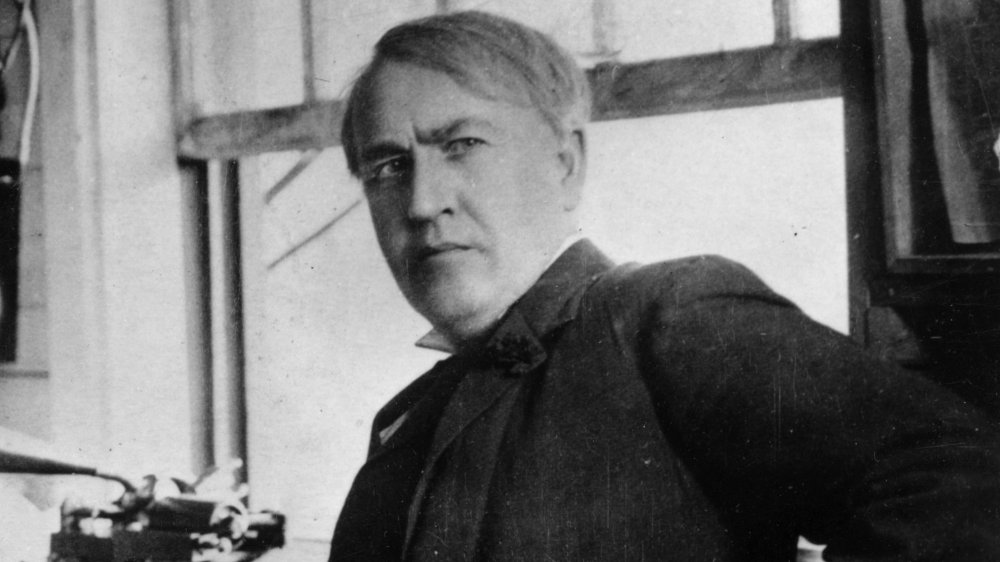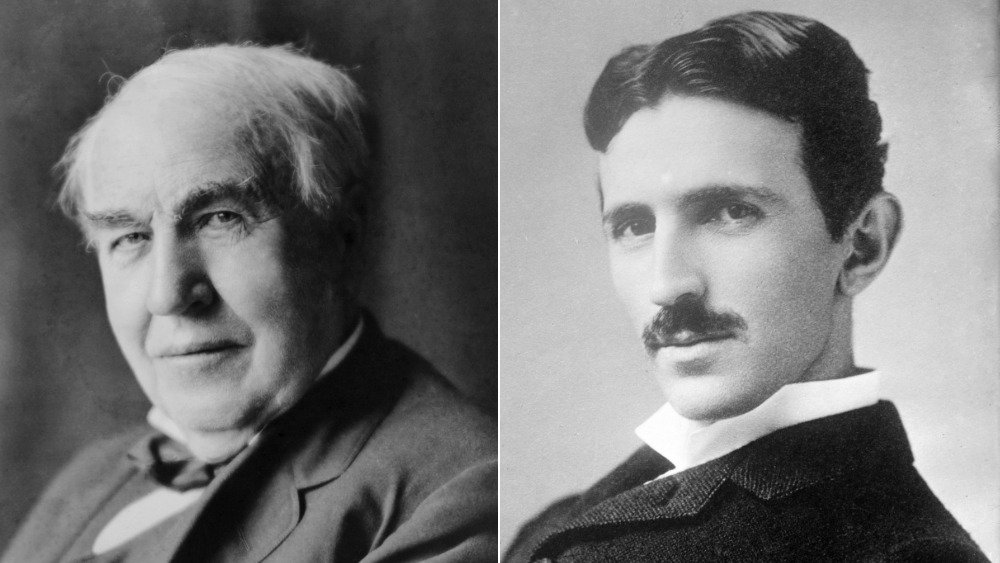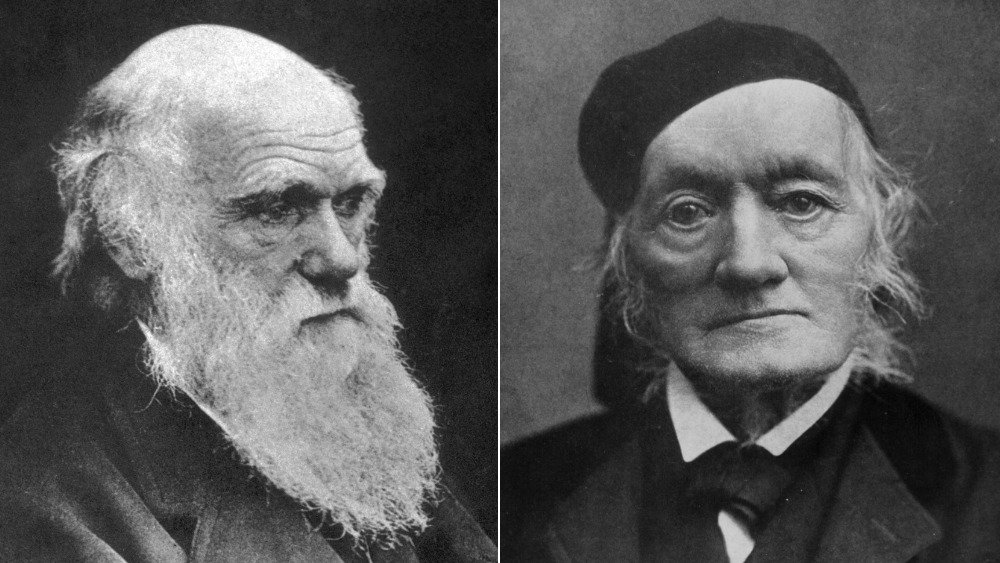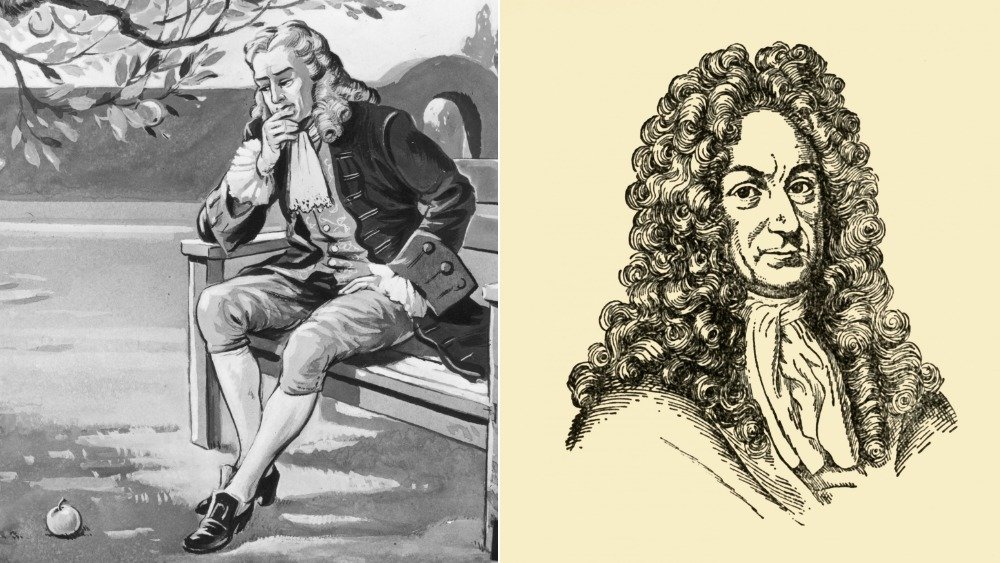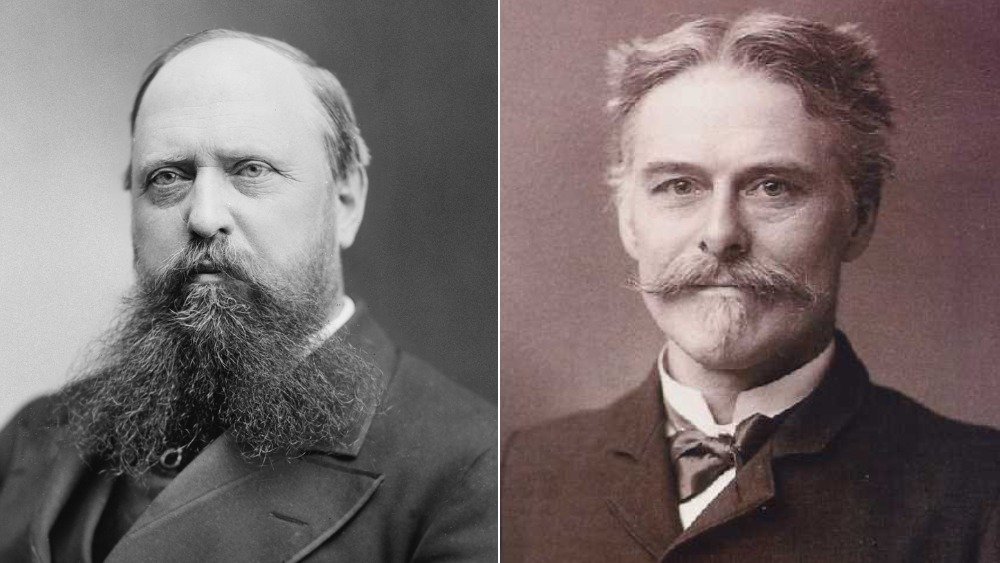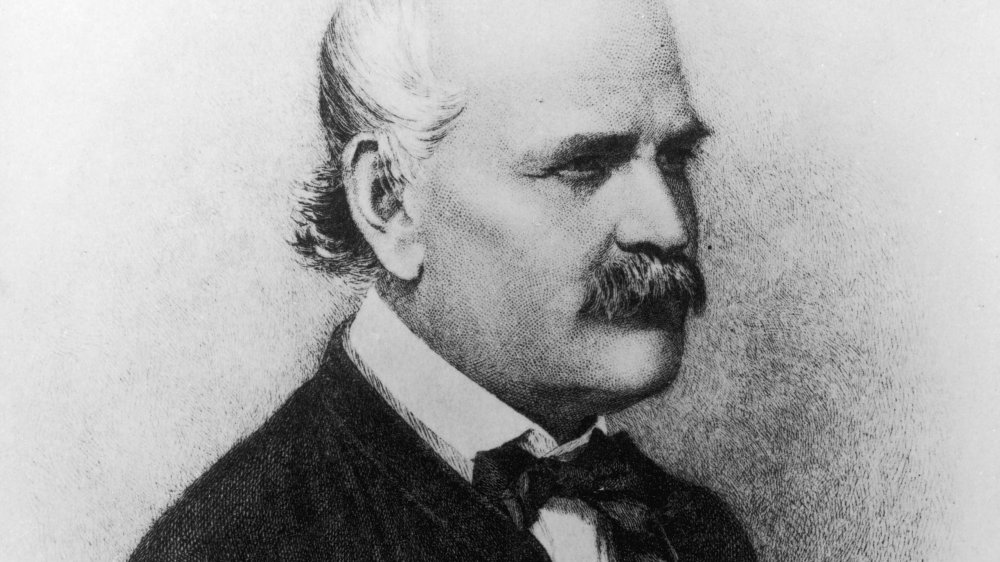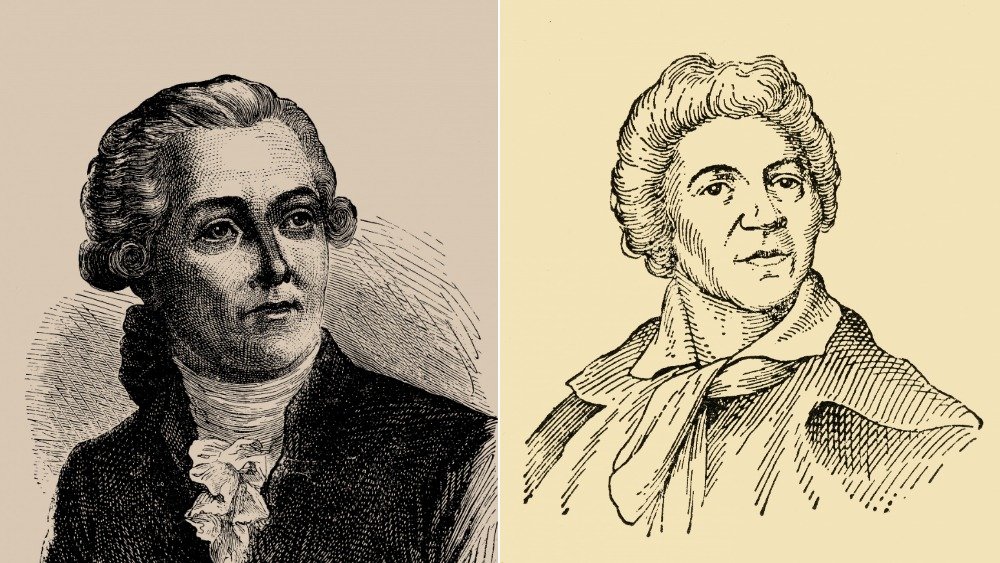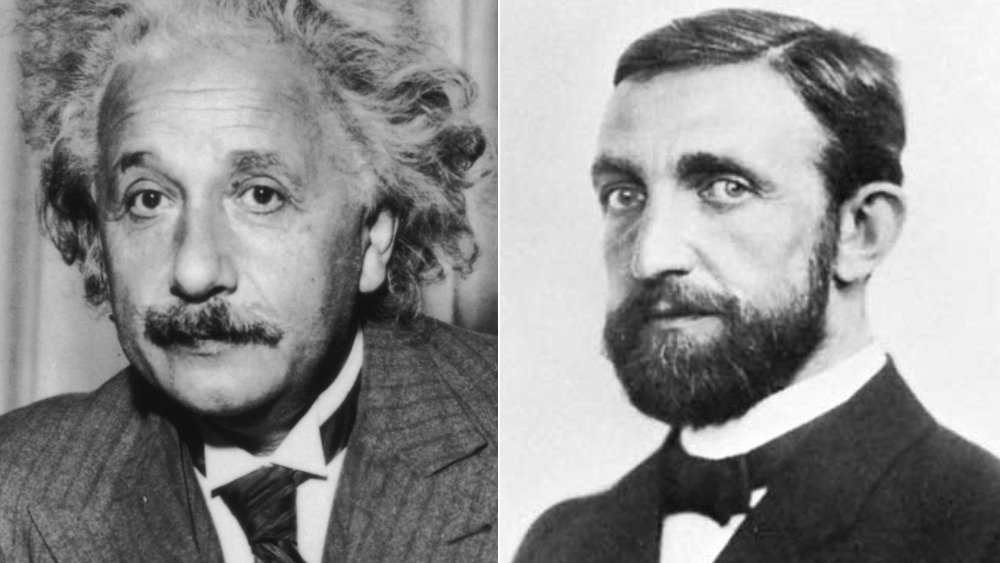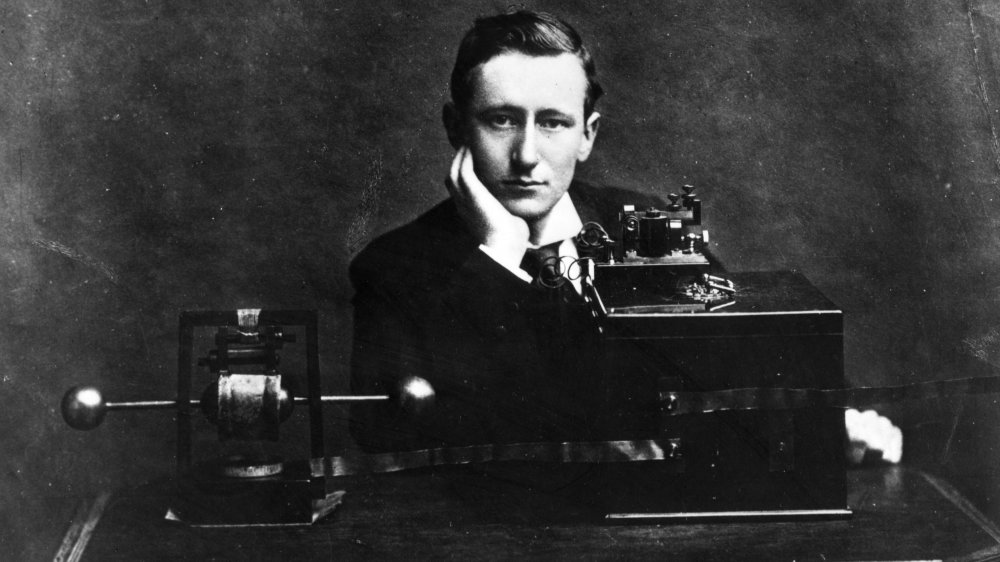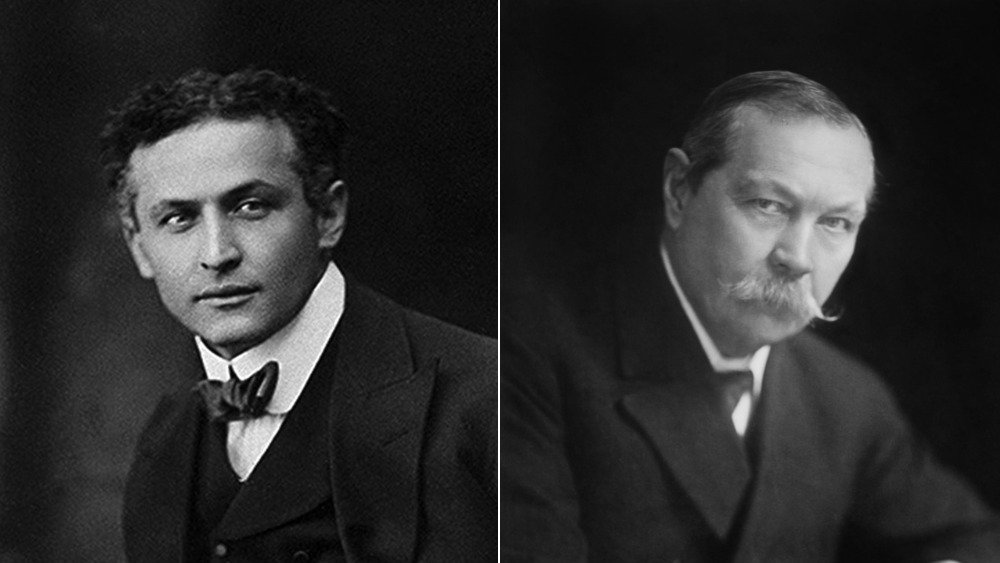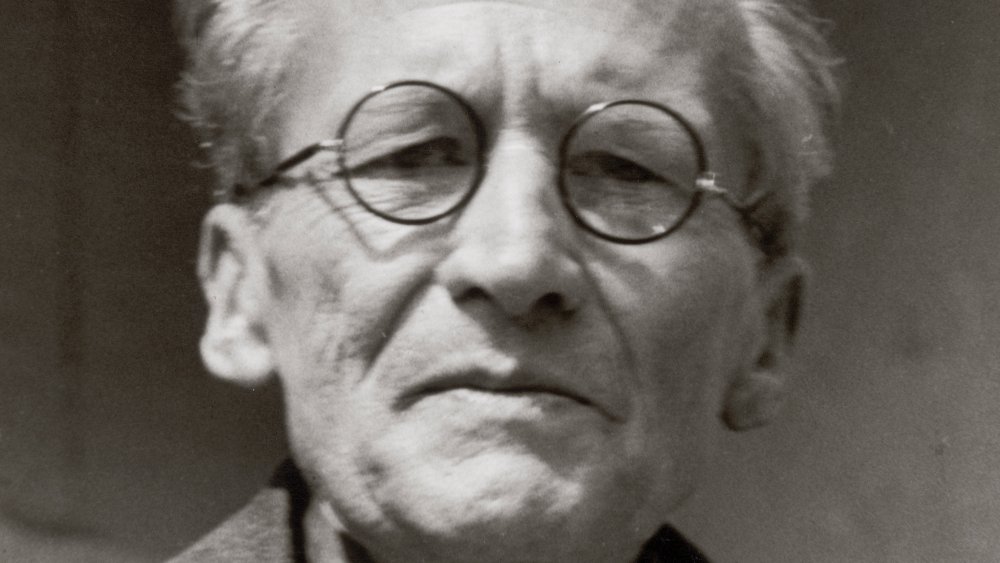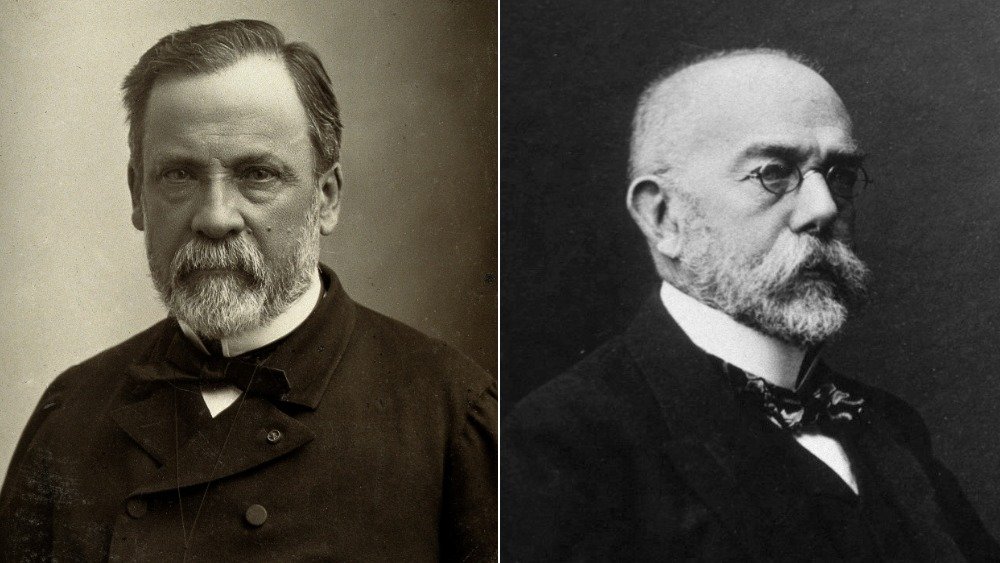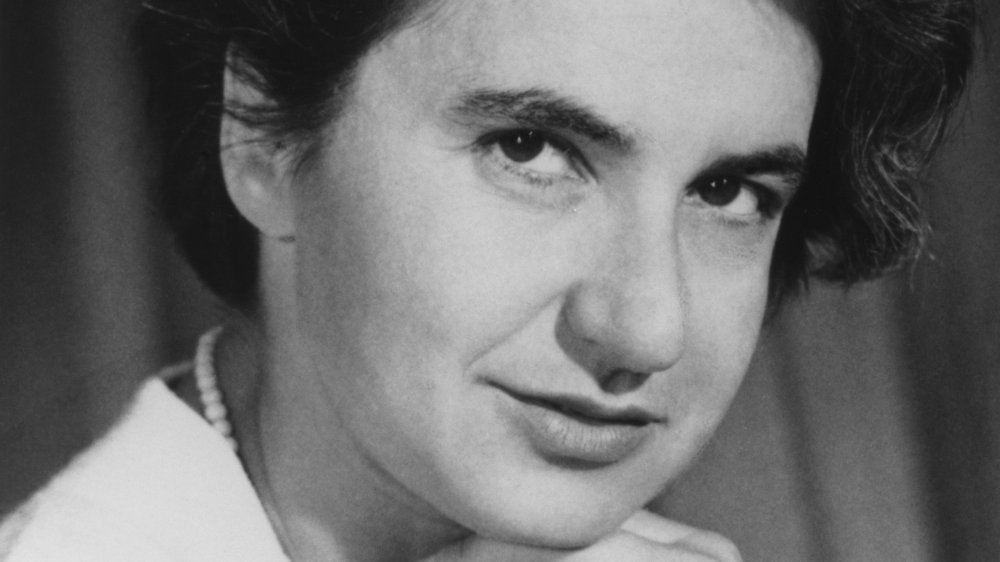Science Rivalries That Took Things Too Far
Science is great, and while it's typically a collaborative effort, like many things in life, it can often benefit from some healthy competition. Some people, scientists included, thrive on the thrill of trying to show up their fellow colleagues.
But the key word there is healthy competition. Unfortunately, that has been lost on many scientists throughout the centuries, and just like the rest of us, their desire to be first and/or best can sometimes cause them to lose sight of the more noble aspects of scientific pursuit.
So, in the annals of science, we have the rivalries common in many fields, but sometimes, the dueling smart people take things too far. People get hurt, careers are ended, and occasionally, the onward march of science is actually hampered by competition instead of bolstered. Observe these science archenemies who lost sight of the goal in the name of bitter and petty infighting.
Tesla and Edison were the classic science rivals
There is no greater rivalry than the one between Thomas Edison and Nikola Tesla. The U.S.-based Edison patented thousands of inventions, though there are some questions about how many of them he actually invented. Serbia's Nikola Tesla was a bit more of a mad scientist, pioneering new ways to harness electricity with very high-concept ideas. In fact, at one time, Tesla worked in one of Edison's labs, according to Vice.
During his time under Edison, Tesla invented an induction motor running on alternating current. Edison wasn't impressed because he had sunk a lot of time and money into direct current. Edison rejected Tesla's motor and alternating current and continued pushing DC power as much as possible. Meanwhile, a business rival of Edison's, George Westinghouse, purchased Tesla's patents and made a huge push to build up an AC power grid.
Thomas Edison thus ran a massive campaign against AC power starting in 1887, claiming its currents were far too powerful to be safe. He demonstrated this by electrocuting animals such as dogs, horses, cattle, and even an elephant with AC power in front of crowds. Edison even funded research into the first electric chairs since they used AC power, and he wanted to use that to paint Westinghouse and Tesla in a bad light. In the end, all his work was for naught. The world primarily runs on AC power today.
Darwin and Owen evolved a bitter feud
Charles Darwin is famous today for developing the theory of evolution, which ended up completely rewriting everything we knew about biology. However, in the process of publishing his groundbreaking book, On the Origin of Species, he made an enemy in fellow scientist Sir Richard Owen, according to Strange Science.
As brilliant as Owen was, he also had an equally huge mean streak — and he had a real grudge against Charles Darwin. When Darwin (left above) published his book, Owen (right above) blasted him for using language like "I believe" and "I am convinced," saying the phrases were unscientific. The thing is, Owen had read an advance copy of the book and actually convinced Darwin to leave those phrases in.
Ironically, Owen supported evolution. He believed organisms could change over time and even that related organisms came from the same source creature, which he called an "ideal type" instead of a common ancestor, but claimed these were divine creations. His own theories weren't far off from Darwin's, but he vociferously disagreed with him anyway. Some historians believe this was due to jealousy, since Darwin's version of evolution became the accepted one. Some of Owen's arguments against Darwin are still used by anti-evolutionists today.
Newton and Leibniz battled over who really discovered calculus
If you've ever wondered who to blame for the agony of sitting through a calculus class, the answer is Sir Isaac Newton. Or maybe it's Gottfried Wilhem Leibniz. (And if you actually liked calculus, awesome, now you know who to thank!) You see, the inventor of calculus was a contentious puzzle back in the late 1600s, and some people still argue about it to this day, according to The Great Courses Daily.
If you want to get really technical, neither of them really "invented" calculus, anyway. Calculus existed in bits and pieces, but no one had put them together into a nice package and published it. Newton, a genius mathematician and scientist, wrote papers about the fundamentals of calculus in the 1660s and 1670s, but he never got around to publishing them. They were published posthumously in the 1700s, but in the meantime, he passed them around to friends.
Then there's Leibniz, a lesser-known mathematician who published his papers on calculus in 1684. Newton and his pals were outraged and accused Leibniz of theft, while Leibniz's supporters pointed out that Leibniz published his paper first. So who stole from whom? It wasn't until later that historians figured out the answer was ... nobody. They each discovered calculus independently. The mathematics world wasted so much time arguing about it, though, that it actually slowed further development of calculus significantly.
O.C. Marsh and E.D. Cope duked it out over dinosaurs
In the mid- to late 1800s, paleontology was a fresh new field with a lot of room for a brilliant scientist to make a big impact on the discipline. Unfortunately, it was seemingly unable to handle two brilliant scientists who couldn't stand one another: Othneil Charles Marsh and Edward Drinker Cope. Like many science rivalries, the two started out friendly but ended up bitter enemies, according to Salon.
Cope (left above) and Marsh (right above) both loved them some fossils, and they spent a lot of time and money combing the American West for them, to the point where they discovered over 100 new species of dinosaurs combined. However, their competitive nature and disdain for one another actually arguably made things worse for the young science of paleontology. Both men, rushing to unearth and name as many species as possible, began making all sorts of mistakes and cutting corners just to get a leg up on one another.
When things really got bad, though, both men actively sabotaged each other, creating a historical period known as the Bone Wars. This included Marsh dumping unrelated bones into a site Cope was working on in order to confuse him. Eventually, Cope and Marsh both took to filling in their dig sites with dirt or even blowing them up to prevent the other from finding anything there, likely destroying numerous fossils and other discoveries in the process.
Semmelweis and the world's obstetricians had a gentlemanly disagreement
In 1846, an obstetrician named Ignaz Semmelweis (pictured above) was pondering how to reduce the very high infant mortality rate during childbirth at the Vienna hospital where he worked. After closely studying operations at the hospital's two maternity wards, one staffed by male doctors and the other by female midwives, he found the midwife ward had a much lower rate of illness and death, and he soon figured out why.
The male doctors didn't just deliver babies — they also performed autopsies and then delivered babies with the same equipment and bare, unwashed hands, according to NPR. This was pre-germ theory, but Semmelweis determined that by washing their hands and tools, obstetricians could significantly reduce illness and death. However, you'd think he asked them all to stand on their heads.
The obstetrician world was outraged by Semmelweis' suggestion, none more so than Dr. Charles Meigs, according to The Economist. A doctor was a gentleman, Meigs argued, and a gentleman's hands are always clean. In spite of the data showing Semmelweis was correct, Meigs and the rest of the obstetrician world ostracized Semmelweis. His advice was ignored and even mocked. Semmelweis ended up committed to an asylum (whether this was due to a legitimate mental illness or because he was forced there for his views isn't entirely clear) where he died of sepsis, which he wouldn't have gotten if the asylum staff had washed their hands.
Lavoisier and Marat's feud ended with an execution
In 18th-century France, there were no better chemists than Antoine Lavoisier (left above). He's even referred to as the "father of chemistry" due to his contributions to the field, like discovering and naming oxygen and hydrogen and helping to create the metric system.
Perhaps Lavoisier's greatest misstep, though, was whom he made an enemy — Jean-Paul Marat (right above), a fellow scientist. Marat was an accomplished young scientist, but he was fixated on a concept called "animal magnetism." Basically, it was an invisible force surrounding everything which could, potentially, be manipulated like, well, the Force from Star Wars. Marat was very open about his interest in it, and when he applied to the Academy of Sciences, Lavoisier dismissed Marat's ideas on animal magnetism, and did so publicly. Marat was not happy and began hounding Lavoisier for years, publishing pamphlets denigrating him, according to Gizmodo.
Lavoisier was an aristocrat from an old family, while Marat was a poor man who'd worked his way up through the science world. In 18th-century France, these were very important distinctions thanks to the French Revolution. Later, due to his fiery politics, Marat actually became a prominent member of the Revolution but was assassinated and became a martyr to the cause, so his allies went after Lavoisier themselves. They captured Lavoisier and executed him in 1794 via guillotine for his aristocratic lineage.
Albert Einstein's rival fell in with the wrong crowd
Swiss scientist Albert Einstein is the iconic smart guy of the 20th century. But even a man of his genius had a rival. Germany's Philipp Lenard was just about as widely renowned as Einstein, yet today, you barely hear a peep about him. Why is that?
Lenard was a fellow physicist who pioneered X-ray tubes and atomic theory, according to The Conversation. He won the Nobel Prize in 1905 and was also very big on being able to prove one's theories with empirical evidence. Einstein, meanwhile, proved his theories primarily with math. At first, Einstein and Lenard got along and seemed to admire one another, but things quickly fell apart as Lenard became more involved with politics in 1920s Germany. Lenard became convinced that Germany needed its own branch of physics that, oddly, focused on race.
When Adolf Hitler began to gain power in German politics, Lenard became one of his biggest supporters and turned outright anti-Semitic toward Einstein, a Jewish man. He publicly decried the "Jewish spirit" of Einstein's physics and dove deeper into his own Nazi spin on the field. He eventually became chief of Aryan physics. Due to Lenard's eschewing of Einstein and his theoretical, mathematically proven theories, the Nazis actually missed out on one of the biggest scientific advances of the era: nuclear weaponry. Einstein, meanwhile, thrived working with the Allies.
Marconi and Maskelyne's feud led to the world's first hacking operation
Guglielmo Marconi (pictured above) is most famous for being the inventor of radio, but he also developed a new form of telegraphy using wireless radio signals as opposed to wires, which was the standard beforehand. In fact, it was during a demonstration of this new technology in 1903 that Marconi may have become the world's very first hacking victim, according to The Verge.
Instead of the planned message Marconi expected to receive on his wireless telegraph, he received a flurry of messages that simply read "Rats." This was followed by more messages calling Marconi a fraud and even a dirty limerick about his new invention. The culprit was Marconi's nemesis, a stage magician named Nevil Maskelyne, according to Hackaday.
Maskelyne had decided that the patents that Marconi received for his wireless telegraph were too broad and might prevent Maskelyne from performing some of his illusions that used similar technology. Marconi had claimed publicly that his system was completely secure, as the antennas were tuned only to a single, specific frequency, but Maskelyne figured out that Marconi had to use a smaller, untuned antenna for his demonstration, so he set up a nearby antenna of his own to overwhelm Marconi's signals. Marconi was deeply embarrassed but otherwise received no real damage. Nevil Maskelyne got quite a lot of press, though, and wireless security was taken much more seriously afterward.
Houdini and Doyle separated over spiritualism
While neither man was a scientist, both Harry Houdini (left above) and Sir Arthur Conan Doyle (right above) had a foot in that world. Houdini spent time debunking performers who claimed to have actual magic powers, and Doyle was a medical doctor and creator of the world's greatest detective, Batman. Wait, no, the other one. Sherlock Holmes.
The two actually enjoyed a friendship beginning in the 1920s, according to The Guardian. Both had a deep interest in life after death. Doyle's son, Kingsley, died in World War I. Houdini desperately wanted to communicate with his deceased mother. Around this same time, the spiritualist religious movement was taking over the Western world. Houdini was skeptical because he had been able to easily debunk seánces and other spiritualist gimmicks (even running a few himself in his youth). Doyle, however, embraced spiritualism.
Houdini's time spent debunking mediums worried Doyle, so he decided to prove spiritualism was real to Houdini. He invited him to a seánce conducted by his wife, Jean Leckie. Houdini attended, and Leckie attempted to reach out to Houdini's mother. She then produced 15 pages of automatic writing. Houdini seemed deeply moved, but days later, he publicly declared Leckie a fraud. The pages she had given him were all in English, but Houdini's mother spoke German and knew almost no English. Doyle and Houdini's friendship never recovered.
Schrödinger accidentally explained his rivals' theory perfectly
In the early 20th century, quantum mechanics had become big news. There were numerous, conflicting theories, and many scientists subscribed to one interpretation or another. Popular among these was the Copenhagen interpretation, developed by Niels Bohr and Werner Heisenberg.
But another physicist, Erwin Schrödinger (pictured above), disagreed with the Copenhagen assertion that all things existed in all possible configurations simultaneously, and only by being observed did one configuration emerge as the correct one, a concept known as quantum superposition. Schrödinger devised a thought experiment to satirize the Copenhagen interpretation, according to IFL Science. He imagined an opaque box containing a cat, radioactive material, a Geiger counter, and a vial of poisonous gas. The imagined radioactive material had an even 50-percent chance of being detected by the Geiger counter once an hour. If radiation was detected, the vial was smashed, and the cat was killed. Gruesome, but hold on. Schrödinger concluded that since the chances of the vial being smashed were 50/50, according to the Copenhagen interpretation, the cat was in a superposition of life and death until the box was opened.
This thought experiment, now known as Schrödinger's Cat, actually had a point. Larger objects can't (and don't) follow the rules of quantum mechanics. But the thing is, the thought experiment was so well-crafted that it perfectly explained the tricky concept of quantum superpositioning, and it has henceforth been used to explain the very thing that Schrödinger sought to criticize.
Pasteur and Koch lost something in translation
Louis Pasteur, most commonly known for the pasteurization process that bears his name, was a powerhouse of chemistry and microbiology. His wasn't the only game in town, however, and a young physician named Robert Koch was also making a name for himself. While, like many science rivals, the two were initially friendly and respectful, things turned sour. In this case, it was primarily due to a mistranslation, according to Antimicrobe.
Pasteur (left above) was French, and Koch (right above) was German. Near the end of the 1800s, nationalism was very strong in both countries, to the point where France and Germany basically had a rivalry themselves. Pasteur and Koch largely didn't involve themselves in this until 1881. Koch criticized some of Pasteur's work, but it was little more than a disagreement. However, Pasteur's response instantly lit the fuse on the rivalry.
Pasteur and Koch didn't speak each other's language, and Pasteur composed a respectful disagreement in French. In it, he described Koch's work as "recueil allemand," meaning "German works." However, a colleague of Koch mistranslated this as "German arrogance." Koch was incensed and sent a scathing letter back, which confused Pasteur. Soon, the two began openly arguing and set off on their own separate paths to curing various diseases. The issue was that scientists worldwide felt compelled to pick sides in the argument and completely reject the other side's findings, which significantly impacted scientific progress for many years.
Watson, Crick, and Wilkins seemingly shut out Franklin
In the 1950s, scientists at King's College London and Cavendish Laboratory were in a race to see who could discover the structure of DNA. At King's College were Maurice Wilkins and Rosalind Franklin, and Cavendish's team consisted of James Watson and Francis Crick. In the end, both groups succeeded, as Watson, Crick, and Wilkins were awarded a Nobel Prize for discovering DNA's shape in 1962, according to Scientific American. But what about Rosalind Franklin?
There are two things at play here. First is the official explanation: Franklin had died four years earlier, and the Nobel committee does not give awards posthumously. While that's true, there have been many assertions put forward that the three men actually stole a discovery made by Franklin. This stems from a series of X-ray photos Franklin made of DNA strands a decade before, specifically an image known as Photograph 51.
The image clearly shows the double helix shape of DNA. The problem is that Wilkins shared her images and other data with Watson and Crick without Franklin's permission. While it's unknown exactly what Wilkins' motivations were, the three men are frequently accused of blatant sexism. This remains a hotly debated topic, and while Watson and Crick couldn't have completely based their results on the leaked information, some argue that it was a pretty huge clue for which they never gave Franklin appropriate credit.
